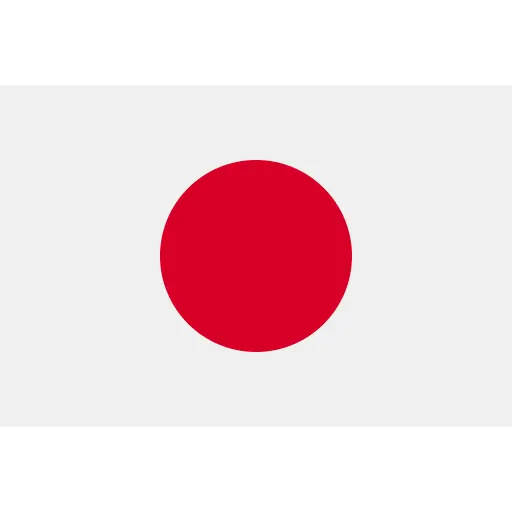5 places you must visit in Kobe, Japan
Written by Merete - intern at Seramikku and former exchange student in Japan
Before I start the post, I would like to briefly introduce myself, because most people probably don't know me. My name is Merete and I work at taishō and SERAMIKKU. I have a degree in Japanese Studies and have lived in the city of Kōbe (pronounced Koo-be with a long o) when I was an exchange student at Kōbe University a few years ago. Anyways, let's get to it! :-)
___
Japan has become a hip tourist destination in the past few years, and at the moment, like many others, I miss traveling - especially in Japan! Are you also going to Japan as soon as possible? Then I have some tips for what you just MUST see in this homely, western and down-to-earth kind of Japanese town. For Kōbe, in my eyes, is something special compared to other Japanese cities, and it is probably because of its historical past as one of the first Japanese ports to open to European ships in 1868 (this was when Japan opened up after a long period as a closed nation).
But enough about Kobe's history and more about what you just MUST see here!

Sights in Kobe
As the seventh largest city in Japan with a population of just over 1.5 million. people, Kobe can be compared to Copenhagen in terms of population. We are close to Japan's second largest city, Ōsaka, in the Kansai area of western Japan, so there are also many people living around Kōbe.
Here are activities for the whole family incl. a zoo, IKEA and Nitori (Japan's answer to IKEA), quite a few shopping centers and beautiful, mountainous natural areas. There is a bit of everything here, and you can get around by train, bus, subway and shinkansen (high-speed train) in and from Kobe. And yes, Kōbe is of course best known for the famous Kōbe meat, which there is plenty of opportunity to taste here - you can't help but see advertisements for it all over the city!
Downtown Sannomiya, Chinatown and mountain areas such as Mt. Maya is just some of the places that are on my must see list in Kobe. There are of course many more places to see, but here are my favourites.
1. Sannomiya, downtown Kobe
Sannomiya is Kobe's central district. Here you will find the city's busiest train station, huge shopping centers and noisy, lively city life. In the summer, you can hear young street musicians playing guitar, and I love the life here.
Visit the beautiful red Shintō shrine Ikuta Shrine , stop by a karaoke bar like Jankara or shop at Sannomiya Center Gai Shopping . It actually feels like there are an infinite number of shopping malls in the surrounding area, merging under Kōbe. If you need to see some green, you can go down to Kobe's East Park ( higashi yūenchi ), enjoy an onigiri rice ball from the local 7-Eleven on the well-kept lawn.
There is plenty to do in Sannomiya. Finally, you must not miss a trip to Don Quijote , Japan's largest discount chain, where you will be overwhelmed by sounds and signs in neon colors. You can definitely find a fun souvenir in the form of sushi socks or matcha-flavored snacks for family and friends here.

(https://unsplash.com/photos/jCB9JpEdKjY)
2. Chinatown
Close to Motomachi Station (which is a stone's throw from Sannomiya) is Kobe's Chinatown, which goes by the name of Nankin-machi. There is a nice map of the district when you enter through one of the many entrances, and in the small square you can also get a picture of the animals of the Chinese zodiac carved in stone or the beautiful red pavilion .
As you might expect, there is plenty of opportunity to sink your teeth into many different Chinese dishes. For example, try a steamed Chinese baozi ( nikuman in Japanese) shaped like a panda at a street food stall, a gyoza dumpling menu at one of the indoor restaurants or try karaage (fried chicken). Psst, you can make your own karaage right here .
Chinatown is a large street food stall, but when the Chinese New Year approaches, there is a party in the street. If you drop by Nankin-machi on your trip to Kobe, don't forget to look for Spiderman , who for some reason has also found his way to Chinatown :-)

(https://unsplash.com/photos/Gj2DtbTKdF0)
3. Natural areas with mountains and waterfalls
Japan is known for its many mountains, which surprisingly take up about 73% of the land area. Kobe, like many other Japanese cities, is surrounded by beautiful nature and mountainous areas, and fortunately for tourists, many are located a short distance from the city center.
If you want to see beautiful views and mountains, I can recommend climbing Mt. Maya and Mt. Rokko , which are two mountains close to my old university on the northern edge of the city. If you don't feel like going on a hike, you can choose to take the cable car up (for a fee). You can see maps and times for these here .
For great views of downtown Kobe within walking distance of Sannomiya, I recommend the anchor-lit Mt. Ikari . At night, the symbol of Kōbe - an anchor - can be seen illuminated from Sannomiya . There aren't many other hikers on Mt. Ikari, so maybe you'll be lucky enough to have it all to yourself.
Close to Sannomiya is Shin-Kōbe S tation, and if you walk under the station along a small road, which at first you don't think is a place where you are allowed to go up, you can walk towards the Nunobiki waterfall . There are signs, but you can still have doubts. After only a quarter of an hour on foot, you come to the beautiful waterfall. The path continues up the mountain, where there is also a small mountain cafe. A good destination for a short walk. Remember to bring something to drink before, if you don't want to pay overcharges in one of the vending machines on the mountain.

(https://unsplash.com/photos/S--4e_Q-wMk)
4. Kobe Port area
If you are looking for a souvenir or need to be entertained on a rainy day, I can highly recommend the harbor area. Here you will find several shopping centers such as Kobe Harbor Land Umie with gaming arcades, a Ferris wheel and not least the red landmark of the city, the Kōbe Port Tower .
If you have the family with you, there are also activities for children such as the Kobe Anpanman Children's Museum & Mall in honor of the 70s Japanese character Anpanman. If you are a fan of Hayao Miyazaki's films, there is also a Studio Ghibli store where you can buy your own Totoro teddy bear. I definitely think that the harbor area is a more western part of Kobe, but nevertheless a super nice part of the city, where you can get away from traffic and get down to speed with a little shopping.
You can take the subway to Harborland Station, but if the weather is nice, you can easily take the trip and walk through the city and look in the small independent shops.
There is so much in the Kobe Port area that I myself have yet to explore. I know, among other things, there is a good photo spot with giant letters that says " BE KOBE ", which you can see on Instagram. Also see if you can spot Elvis around the Umie and Mosaic shopping areas.

5. Hot springs and bathing establishments
In Japan, hot springs ( onsen ) and bathing establishments ( sentō ) are a regular part of many Japanese people's lives. Once upon a time, you didn't have a bath at home, so you went to the bathing establishment to bathe, and yes, it's just stuck as a tradition. Today, many Japanese people enjoy sitting in the warm water with their families. When you visit the hot springs or bathing establishments, you do so without clothes among others of the same sex. A trip to the onsen often costs less than ¥500 (around DKK 28).
In Kobe, the most famous onsen is probably Arima Onsen , which is a small spa town with hot springs. It is recommended by many to take a trip here. Personally, I visited Nada Onsen , which is a cozy little bathhouse close to Rokkomichi Station. Here you must bathe WITH tattoos.
For many years, tattoos have not had a particularly good reputation in Japan because they have previously been associated with the Japanese mafia, the yakuza . Perhaps this is changing, but today it is still not considered a particularly good thing for Japanese people to be tattooed. However, most Japanese people are completely OK with non-Japanese people being tattooed (I investigated this in my thesis). Therefore, you can safely visit Nada Onsen if you have tattoos. Always remember to check if it's OK to be tattooed before entering an onsen or sentō - it's good style in Japan.
If you think it's a bit transgressive to bathe naked with strangers, I recommend staying at a traditional ryōkan . Here you can in some places book a room with a small outdoor onsen .
Be careful not to sit in the hot water for too long, so that you become uncomfortable (been there, done that). After a trip to the hot springs, it's always good to have a cold drink from one of the many Japanese vending machines outside.

(https://unsplash.com/photos/3nQlxPNSvvo)
Such! A small guide with sights in Kobe. If you have more time, I can also recommend a stop by the Kobe Earthquake Memorial Museum in honor of the victims of the great earthquake of 1995. It's a very thought-provoking visit anyway. And if you're in Kobe in December, you can see the beautiful Luminarie light show at Sannomiya in honor of the same.
Should you have any questions for me about Kobe or Japan in general, feel free to leave a comment here. Hi hi, or “ mata nee ” as they say in Japan :-)
Read also: 12 tips for your first trip to Japan .






